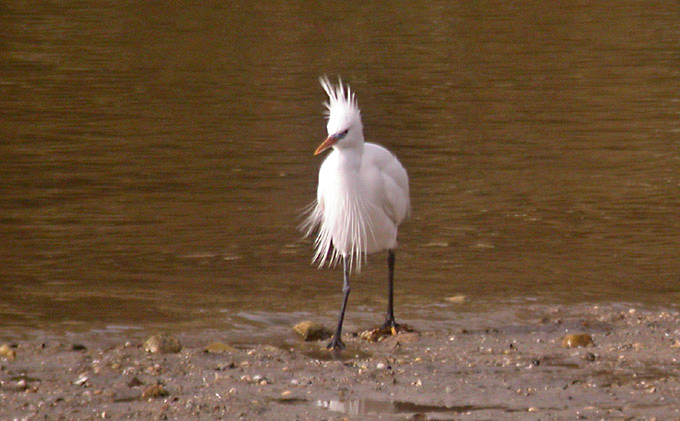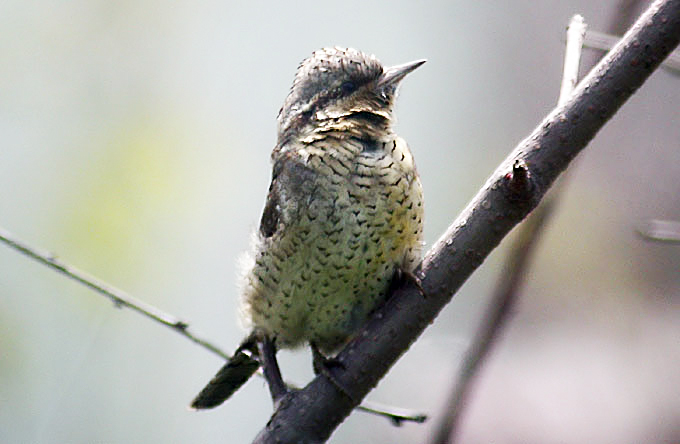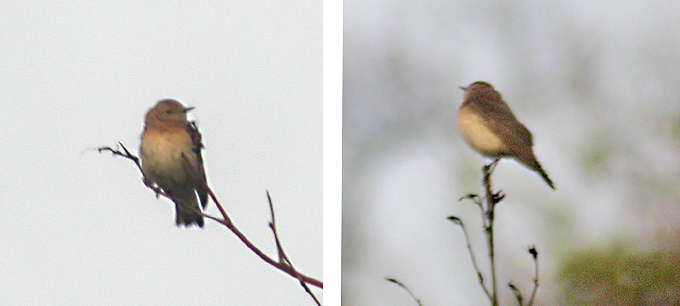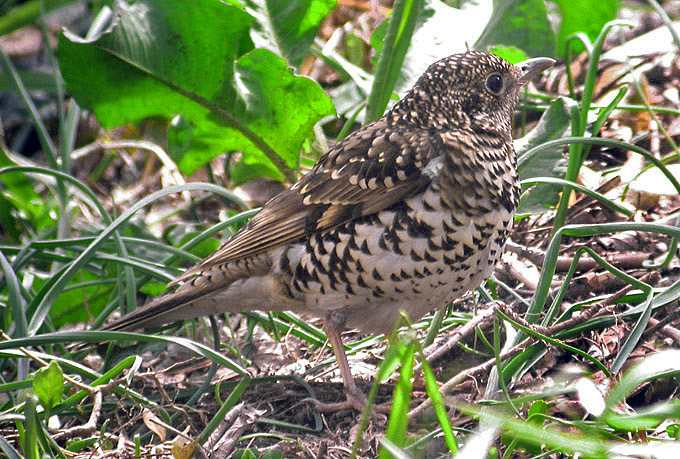 | E-mail to Birds Korea |
 | KWBS |
in the Region
 | The Oriental Bird Club |
 | BirdLife International (Asia) |
May
Like April, a great birding month. Temperatures begin to climb with day maxima often reaching 25°C by the end of the month, though feeling cooler on offshore islands due to low sea temperatures and wind. Fog can temporarily limit birding, while also causing spectacular falls of migrants.
Migration continues, and persity can be exceptional. Mongolian Plovers, Red-necked Stints, Broad-billed and Spoon-billed Sandpipers peak at the Geum Estuary, while Chestnut and Little Buntings outnumber Yellow-throated and Black-faced Buntings. Mugimakis, Dark-sided and Grey-streaked Flycatchers also start to arrive, often peaking in the second and third weeks of the month. Brown and Thick-billed Shrikes, Siberian Rubythroats and Broad-billed Rollers add colour and quality to the birding mix. By late May locustella warblers (Lanceolated, Pallas’s, Middendorff’s, Stayn’s and Gray’s Grasshopper) arrive on western islands. In forests Ruddy Kingfisher and very small numbers of Fairy Pitta are in territory and vocal, though still elusive and easily disturbed. Korean breeding Chinese Egrets and Black-faced Spoonbills remain widespread at the best sites, and Saunders’s Gull have also nested in Gyeonggi Bay annually or near-annually since at least 1999.
In recent years May has produced several sightings of national rarities like Common Chiffchaff, Band-bellied Crake, Black-winged Cuckoo-shrike, Cinnamon Bittern and Red-headed Bunting. "Korean firsts" in May have included Asian Drongo-cuckoo, Hill Blue Flycatcher, Spotted Dove and House Sparrow in 2006, and Large Hawk-cuckoo and Yellow-streaked Warbler on Socheong Island in 2007.
(The following records are a compilation of our own sightings and records sent in by other observers. As well as being posted on the Birds Korea website(s), selected records are also forwarded to other Korean-language birding websites; records of threatened species are arranged and forwarded to Birdlife International and national authorities when appropriate; flag images and records are passed to bodies responsible for their coordination throughout the flyway; and all records sent to us are used to compile annual reports and to support the evolving understanding of the status of many of Korea’s birds.)
Seogwipo area, Jeju, May 31
I finally managed to spot a Fairy Pitta today, in a narrow and quiet valley. It was calling loudly, moving unseen through the treetops for well over an hour before it dropped down onto a lower branch for a few minutes of excellent views. Heard, but not seen in this valley were several vocal Japanese Paradise Flycatchers, as well as Common and Lesser Cuckoos.

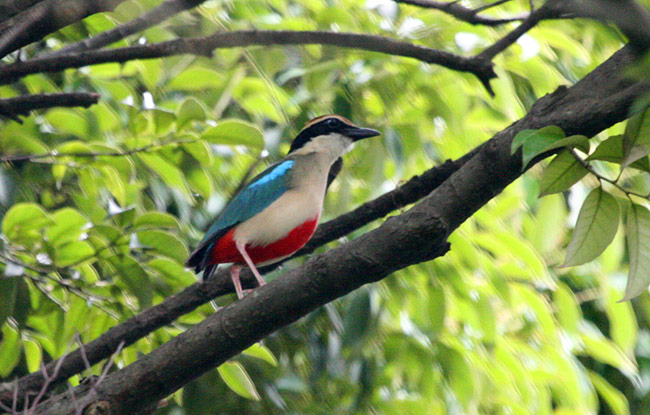

Socheong Island, May 26
A last walk out to the lighthouse in the morning, gave the impression that numbers of migrants were low, so not the worst day to leave the island. Still 29 Arctic and 15 Radde’s Warblers counted and no less than 4 Two-barred Greenish Warblers heard, but more interesting was ‘the one that got away’: at the lighthouse, an acrocephalus-warbler the size of a Black-browed Reed Warbler was seen for a few seconds. It perched high in the lush grass, showing it’s head, which had an obvious pale supercilium, only reaching as far as the eye, and no dark eyebrow. The rest of the bird was hidden in the grass, so I couldn’t see the wings and tail, but it gave the impression of a Blunt-winged Warbler. Unfortunately it disappeared into a large rose-bush, where I wasn’t able to relocate it.
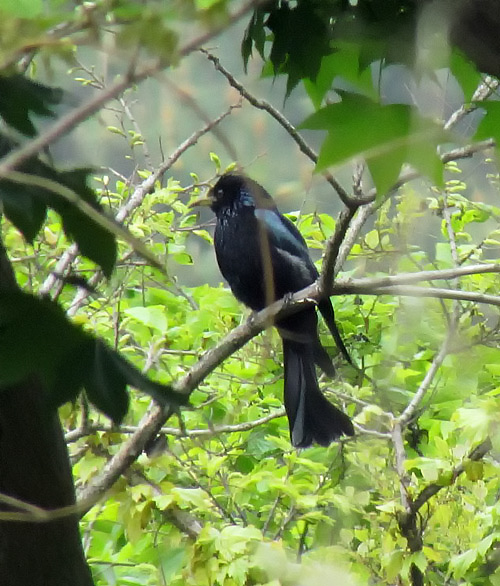
The ferry ride back to Incheon had around 40 Streaked Shearwaters and single Common and White-winged Tern.
Socheong Island, May 25
My last full day on Socheong-do started off with a surprise, when what initially looked like an odd, slender shrike perched on a telephone-wire turned out to be a male Black-winged Cuckooshrike, once I got my binoculars on the bird. Sadly it only just perched here long enough, for me to get my camera out, before disappearing into the trees.
At the lighthouse, the local, and very noisy, pair of Peregrine Falcons were so kind to alert me to a Yellow Bittern that came in off the sea, and somehow managed to evade the attacks from the falcons. In the gully here a Lanceolated Warbler was singing briefly, a Pallas’s Grasshopper Warbler was flushed and best of all, a female Siberian Thrush showed briefly alongside a Grey-backed Thrush. There was also a new Black-capped Kingfisher here and 10 Chinese Bulbuls, which tried to head out west several times, before finally giving up.
Compared to this morning, the afternoon seemed almost dull, with 23 migrating Chinese Sparrowhawks and an adult male Red-flanked Bluetail.
Socheong Island, May 24
Another sunny and warm day, where fresh birds had clearly arrived during the night. 67 Arctic Warblers were counted during the day, and single digit numbers only of Dusky and Yellow-browed Warblers marked a turning point in Spring migration. I finally managed to track down a Siberian Rubythroat (and thankfully a male), and there were single Greater Short-toed Larks at opposite ends of the island, and a couple of fresh Tiger Shrikes.
Best bird of the day though, was a Tickell’s Leaf Warbler on the shrubby hillside behind the churches in the village, which showed for half a minute, before disappearing in the bushes further along the hill.
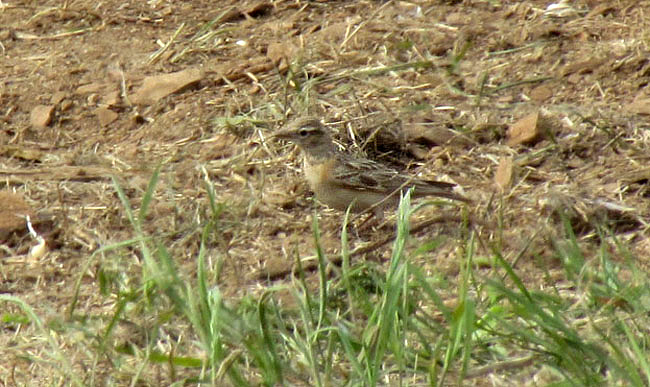
Socheong Island, May 23
A calm a sunny day, that once again had birds to keep me busy all day. Warblers were common with 29 Arctic, 18 Radde’s and Dusky Warblers, 8 Black-browed, 3 Thick-billed and 4 Oriental Reed Warblers, 26 Brown Flycatchers, 19 Brown Shrikes, 210 Barn, 40 Red-rumped Swallows and single Northern and Asian House Martins, calling Oriental Scops Owl in late morning, 2 Pallas’s Grasshopper Warblers, a female Japanese Quail flushed, 3 Tiger Shrikes and 2 Japanese Grosbeaks.
Socheong Island, May 22
Another good fall had occurred during the night, and 3 Lanceolated Warblers could be heard giving short bursts of song, on my way out to the lighthouse. 3 Eastern Oystercatchers flew west along the northern coastline, numbers of Black Drongos had climbed to 10, 7 Chinese Bulbuls tried to leave the island repeatedly as did a Jay, a White-breasted Waterhen was flushed from the lighthouse gully (where it was seen daily until my departure 26 May), late, male Red-flanked Bluetail and female Daurian Redstart were present, there was a female Common Rosefinch at the lighthouse and a singing male was heard from the village, a Pechora Pipit was flushed into a tree, where it perched for 10-15 seconds (also present next day), a mixed flock of Swallows and Swifts held 4 White-throated Needletails and 2 Asian House Martins, and a Northern Hawk Cuckoo was calling from the eastern end of the island.
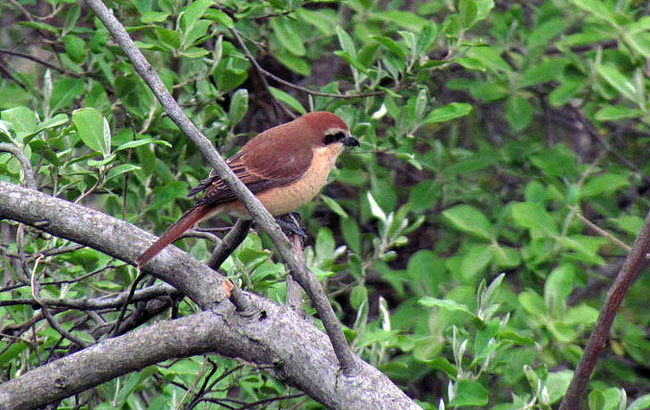

An interesting/frustrating ficedula-flycatcher was seen briefly three times, that looked mostly like a female Mugimaki Flycatcher, but the orange wash on the breast continued all the way down to the vent, and the brown colour on the back seemed to have a greyish tone, suggesting a second-year male. I’ll try and post a few pictures later.
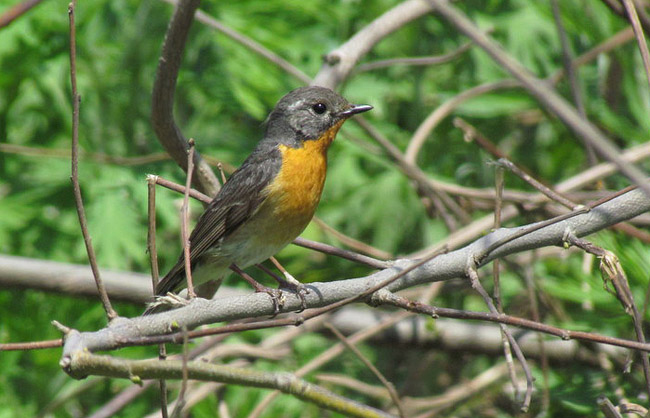
Northeast Jeju, May 21
A nice mix of fog and sun, for a full day of showing visiting birders around the island. In an evergreen forest near the northeast coast, we got good looks at a Eurasian Jay, and great close views of a Japanese Paradise Flycatcher. Nearby, a Common Cuckoo was seen, while several Lesser Cuckoos were heard only, while three late Upland Buzzards were a surprise circling overhead.
At Hado, a single Eurasian Wigeon and Black-faced Spoonbill were reminders of the winter. At least two dozen Black-winged Stilts, and two Black-tailed Godwit were also notable at Hado. Nearby, a Chinese Egret was a great treat to watch, as it stalked fish close to the coastal road.
At the Arboretum it looks like the female White-bellied Green Pigeon has not returned this year, although Young Ho spotted a male near the northeast coast about a month ago.
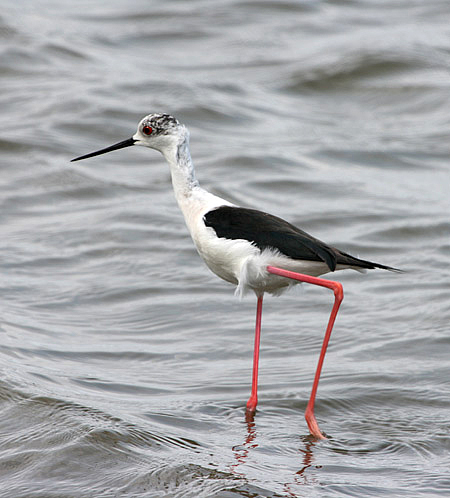
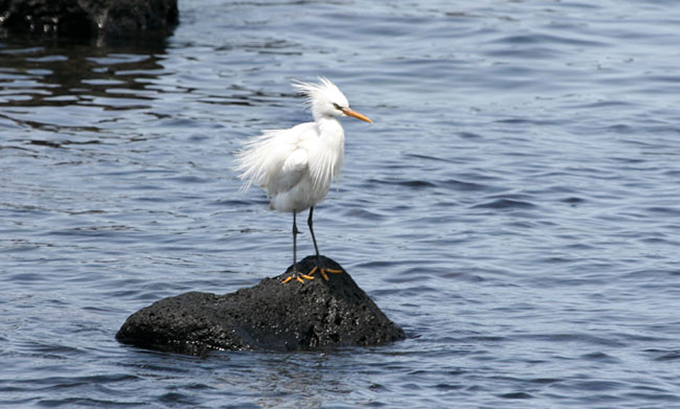
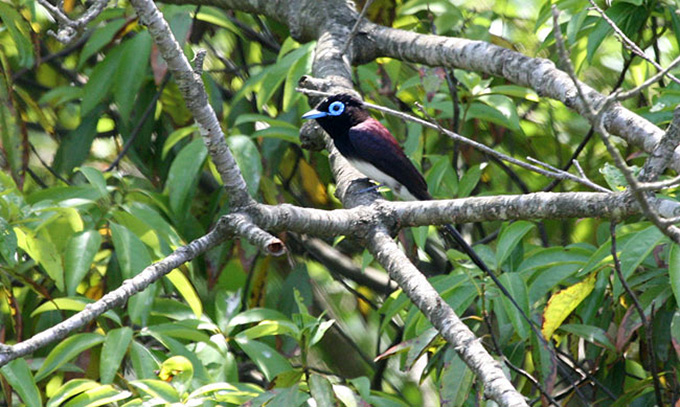
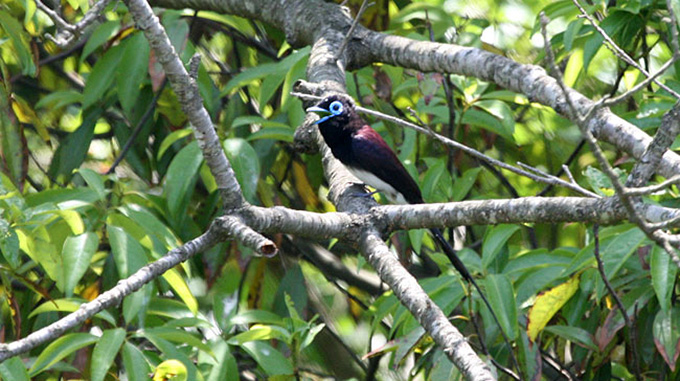
Socheong Island, May 21
Plenty of new birds had arrived overnight, and suddenly Arctic Warbler had become the most numerous Phylloscopus (25+) along with Dusky Warbler (23) instead of Yellow-browed Warbler (20). New birds were Dark-sided Flycatcher, Oriental and Lesser Cuckoo, and scarcer birds like single Japanese Grosbeak, Northern House Martin, 2 fresh White-throated Rock Thrushes and a Hair-crested Drongo on the hillside behind the two churches in the village. This bird could be found daily in the same flowering tree until the day I left the island (26 May), and was remarkable in having a yellow bill! First I thought it might just be an overdose of pollen from the flowers it had been feeding on, but it seemed to be a constant feature on the bird (see photo below taken on 26th May).
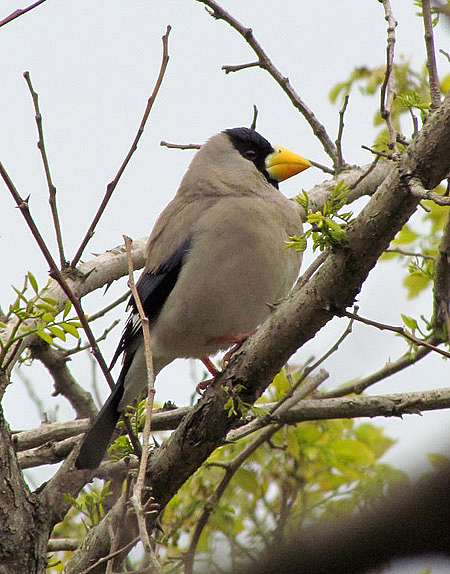
Gageo Island, May 20
Another very windy morning led to fears that the boat would again be canceled, however it struggled to the island over bumpy seas, and I was able to leave only a day later than planned. Birdwise, it was an extremely quiet morning; common migrants have all but disappeared. Nothing new was added to the list today, with the only notable records the continued presence of the White-shouldered Starlings in 1-Gu, also the lone Black-billed Magpie, and still 2 Black Drongo remaining from the 8 or so that have frequented 1-Gu for most of the week. A few birds in the insalubrious location of the tip at the western end of 1-Gu included 3 Black-browed Reed Warblers in full song and an Oriental Reed Warbler.
Socheong Island, May 20
Very heavy fog for most of the day, that lifted in the late afternoon, made birding difficult, but a singing Lanceolated Warbler in the morning cheered me up, as did a White-breasted Waterhen, 4 Chinese Bulbuls and 2 Two-barred Greenish Warblers.
With the fog lifting in the afternoon, vizzmiggin was on again, and in a few hours 12 Chinese Sparrowhawks flew east (along with 4 roosting birds), with single Japanese Sparrowhawk, Grey-faced Buzzard and male Amur Falcon, as well as 12 Dollarbirds.
Gageo Island, May 19
Quieter still in terms of birds with only 49 species seen today; continued strong winds meant cancellation of the boat back to the mainland. New birds for the trip list comprised a Two-barred Greenish Warbler in the gully at 1-Gu, an Asian House Martin overhead, and an Oriental Honey Buzzard near the pass; meanwhile in one area of bamboo, 3 newly arrived Styan’s Grasshopper Warblers were singing but proved very difficult to see in the windy conditions. The pair of White-shouldered Starlings were again present in 1-Gu, while other notable birds included a male Siberian Rubythroat on the clifftop above the quarry, and a splendid male Northern Goshawk passing low over 1-Gu village.
Socheong Island, May 19
Less windy but more foggy, with scattered migrants arriving through the day, like a mixed flock of 2 Little Egrets, 1 Intermediate Egret and 7 Eastern Cattle Egrets. A few Chinese Sparrowhawks seemed to drop out of the fog every now and then, along with 3 Asian House Martins, single White-shouldered and Daurian Starling, single Pechora Pipit, that for once was calling several times as it circled the western end of the island at the lighthouse, a Japanese Waxwing at the power station, 2 male Tiger Shrikes and 3 new White-throated Rock Thrushes.
Gageo Island, May 18
A sunny and very windy day, with a noticeable decline in numbers of common migrants today. Of 63 species, the most interesting were around 1-Gu: a House Swift with an arrival of Pacific Swift in the afternoon, a male Chinese Blackbird, a male Citrine Wagtail on the landing stage, and a pair of White-shouldered Starling. Also seen today around 1-Gu, a male Chestnut-cheeked Starling and 3 Sand Martin. It was very quiet at 2-Gu in the morning due to the strong winds, but nonetheless the 11 Chinese Grosbeak were seen again, as well as an Ashy Minivet and 2 Red-throated Pipit still.
Socheong Island, May 18
Windy and foggy, with number of birds much the same as the day before. 2-3 Chinese Pond Herons were found around the island, trying hard to find something to feed on, a Black-capped Kingfisher near the power station (which remained until 24 May), one Two-barred Greenish Warbler heard at the light house, a male Bluethroat, 3 White-throated Rock Thrushes and at least 9 Pale-legged Leaf Warblers.
Gageo Island, May 17
An excellent day, which while producing “only” 65 species, included plenty of scarce migrants and two national rarities. Last night’s rain and drizzle gave way to a hazy day with spells of bright sunshine and a light westerly breeze. The first surprise of the day was a male pandoo Blue Rock Thrush around rocks at the east of the quarry, in the same area as the Northern Wheatear (which was not seen today). It showed very well, but briefly, on two occasions. Unfortunately I could not get any photos. Second prize for the day went to the Hair-crested Drongo near the “pass” between 1-Gu and 2-Gu, which while giving excellent (and prolonged) views through binoculars, was a little too distant for any workable photos from my compact digital camera. 2-Gu held some interesting migrants including Chestnut-cheeked Starling (2), Red-billed Starling (1), Chinese Grosbeak (11), and Red-throated Pipit (3), while the roadside between there and 1-Gu produced Thick-billed Shrike, Radde’s Warbler and Forest Wagtail. In the quarry today, a single Blyth’s Pipit with about 5 Richard’s Pipit, 3 Pacific Golden Plover, an unidentified snipe flushed, and still plenty of Black-browed Reed Warblers about. Of local interest, a single Black-billed Magpie was seen at 2-Gu in the morning, and it (or another) was at 1-Gu in the afternoon, while on the landing stage the Sharp-tailed Sandpiper was replaced by a Red-necked Stint, with the Little Grebe and Common Moorhen both still present nearby.
Socheong Island, May 17
Arrived on Socheong-do around mid day, after dozing through most of the ferry ride because of jet lag, but still managed to see 4 Streaked Shearwaters close to the island.
I spent the rest of the day slowly working my way out to the light house, checking out the different roads leading off the main East/West road, and having just arrived from Denmark, I was kept busy by even the most common stuff. There seemed to be many migrants around, with Phylloscopus warblers and Buntings being common, with about 15 each of Dusky and Radde’s Warbler, 25+ Yellow-browed Warblers and a nice mix of Little, Yellow-breasted, Chestnut and Black-faced Buntings. Less numerous were Arctic, Pallas’s, Pale-legged and Eastern Crowned Warblers, Rufous-tailed and Siberian Blue Robin.
Six Black Drongos were at the village with 2 Daurian Starlings, and of the 12 Brown Shrikes – 2 male birds at the lighthouse looked like the warm rufous-brown ssp superciliosus.
Gageo Island, May 16
A mainly cloudy day with fog, although it was sunny for a time in the late morning. Today I visited 3-Gu, where a small grove of trees around a rocky stream provided shelter for many birds. On the stream itself, a White-breasted Waterhen and a Striated Heron put in brief appearances, while a single tree nearby held 5 species of flycatcher (Asian Brown, Grey-streaked, Dark-sided, Mugimaki and Yellow-rumped). 6 species of bunting on an adjacent meadow included Tristram’s, Yellow-browed and Yellow-breasted. Some good raptor passage over 3-Gu in the late morning sunshine included 80 or more Chinese Sparrowhawk, 3 Grey-faced Buzzard and single Black Kite and Northern Goshawk. On the trail back to 1-Gu, a White’s Thrush fed quietly on the forest floor, and a Rufous-tailed Robin was also seen. Back in 1-Gu, a Common Moorhen was perhaps noteworthy. In the quarry, the Northern Wheatear was still present and showing very well; also there, single Pallas’s Reed Bunting and Siberian Rubythroat, and an apparent arrival of Black-browed Reed Warblers.
Gageo Island, May 15
Warm, hazy sunshine and a light westerly breeze greeted me when I arrived on Gageo-do at lunchtime on Sunday. After walking the road towards 2-Gu and spending some time around 1-Gu village, the late afternoon found me at the far eastern end of the quarry, where I found Korea’s 3rd Northern Wheatear – a splendid male. Other interesting records for the day included a singing Northern Hawk Cuckoo and a range of migrant species including 7 species of bunting, 4 species of flycatcher, Thick-billed Shrike, Japanese Grosbeak and Black Drongo. The seaweed-covered landing stage at 1-Gu port hosted a Sharp-tailed Sandpiper, a Terek Sandpiper and 2 Common Redshank, while an unexpected sight was a Little Grebe in the harbor.
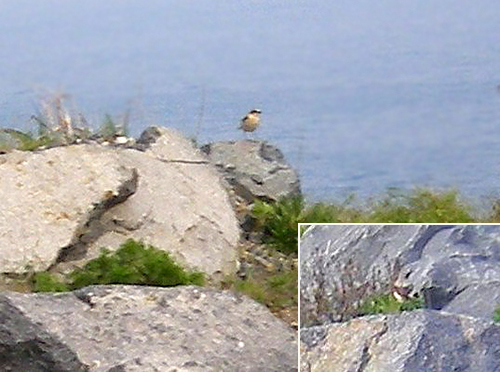
Various locations East coast, May 14 & 15
I started my birdathon at 10:00 near Alps Resort just off the northern most highway over the mountains in Goseong County. The village is called Jinburyeong. I drove down the range towards the coast then visited Geonbongsa Buddhist Temple. Then I took a back road to Geojin and Hwajinpo Lagoon where I found a few ducks that had not yet flown north. From there I went to Daejin hoping to get some seabirds, but there were very few gulls around. I did find a Blue Rock Thrush as I headed south along the coast to Geojin. On Geojin Beach I found a pair of Whimbrels and just had time to get photos before they were scared off by someone walking towards them along the edge of the water.
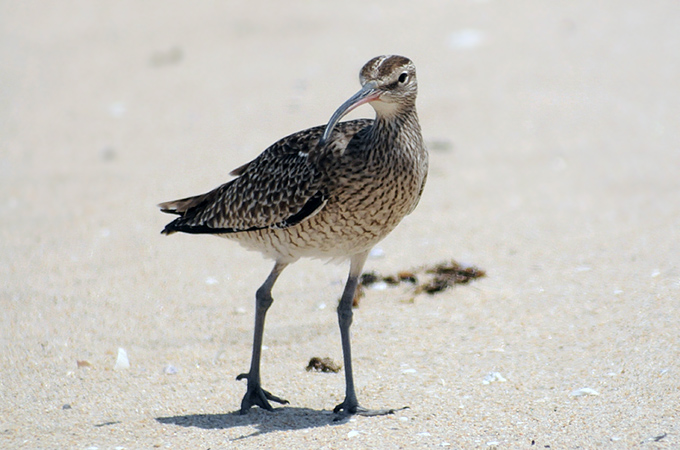
Continuing south I spent some time around my home territory at Ganseong, first looking at the gulls near the mouth of Buk Cheon. It was there that I saw what I believe was a Grey Nightjar flying from near the coast into the forest on a small hill north of the creek. I drove along Buk Cheon to see what else I could find and found Little Ringed Plovers and Kentish Plovers on the back of the sandbar by the sea. There was plenty of activity at the breeding colony of about 50 Grey Herons and 10 Eastern Great Egrets.
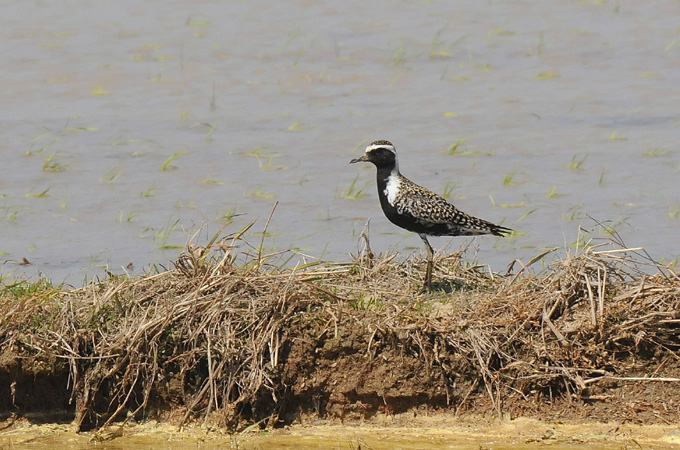
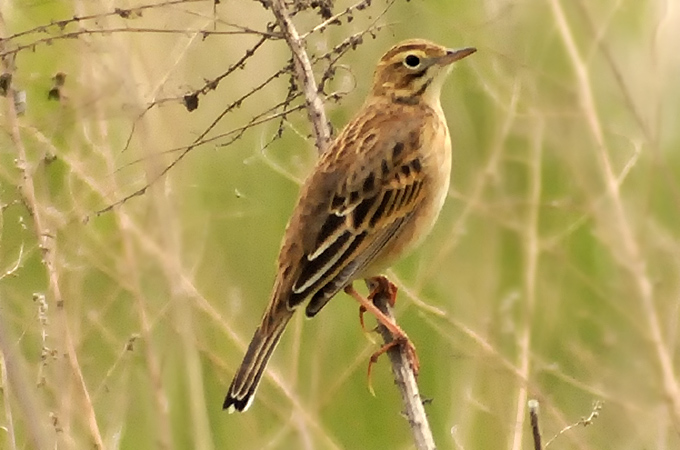
A thorough search of the rice fields east of Ganseong turned up 2 Pacific Golden Plovers, a Richard’s Pipit and an Eastern Yellow Wagtail among other birds. Nam Cheon in the middle of the day had a Bar-tailed Godwit, a Korean Bush Warbler, Oriental Reed Warblers, a few ducks and other birds as well.
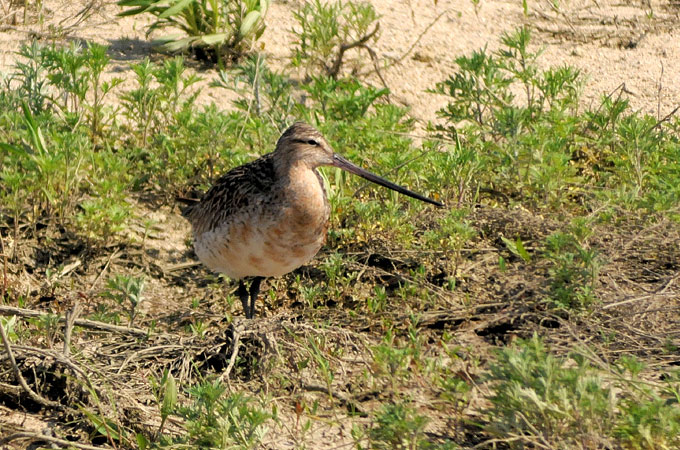
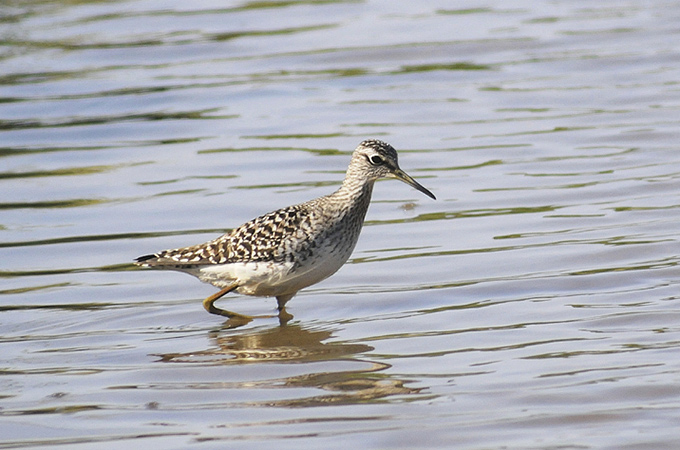
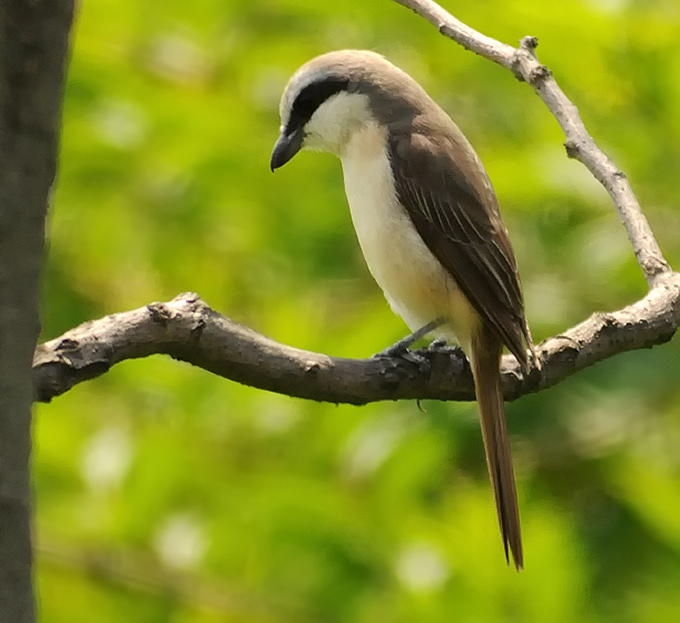
I found Wood Sandpipers near Songji Lagoon and small numbers of other birds as well. There were very few birds to be seen along the coast because many people were enjoying the fine weather by the sea on Saturday afternoon.
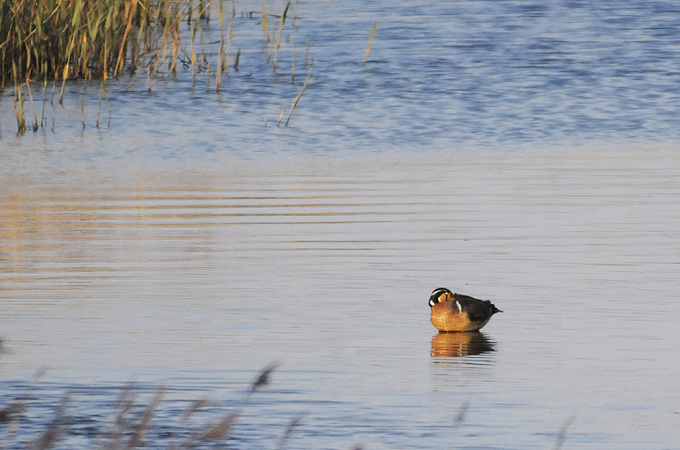
There were some good birds at Cheongcho Lagoon, including a Redshank, Grey-tailed Tattler, Terek Sandpiper and Common Sandpipers. There was also a lone male Baikal Teal and a Chinese Pond Heron at the edge of the water. In the trees around the lagoon I found some good birds too. I returned to Ganseong after dark to get some rest and prepared for an early start at Namdae Cheon on Sunday morning. I arrived there just after 06:00 and had a Black-naped Oriole singing not far from Naksandae Bridge. There were Cattle Egrets and Eastern Great Egrets in the grass around the island west of the birdge. From when I arrived until 07:20, flocks of passerines flew over heading north. I counted over 2700 of then. The waves of birds stopped after that time. I wonder how many I missed that flew past earlier in the morning. Due to the overcast conditions and poor light, it was not possible to identify many of the small birds as they went past. I took some photos of a few flocks but they were too far away for me to tell what they were. I did managed to identify the gulls on the lagoon, and some of the warblers in the trees near the floodbanks. Walking through the trees I flushed a Northern Boobook. I finished my birdathon count closer to Yangyang. I found some buntings and Richard’s Pipits on the low vegetation near the Namdae Cheon. I also saw a Zitting Cisticola in this area.
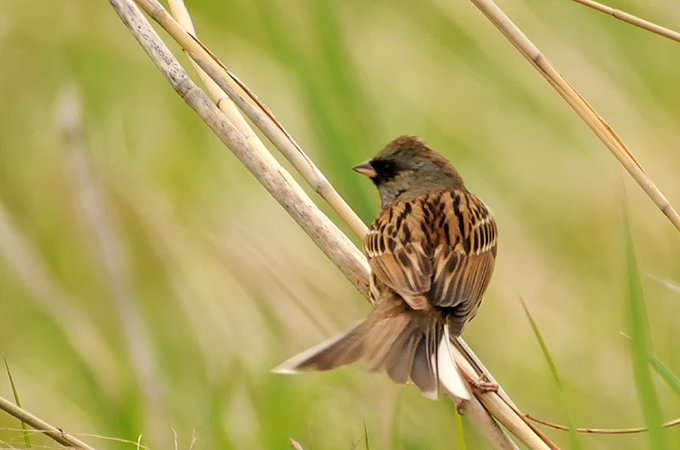
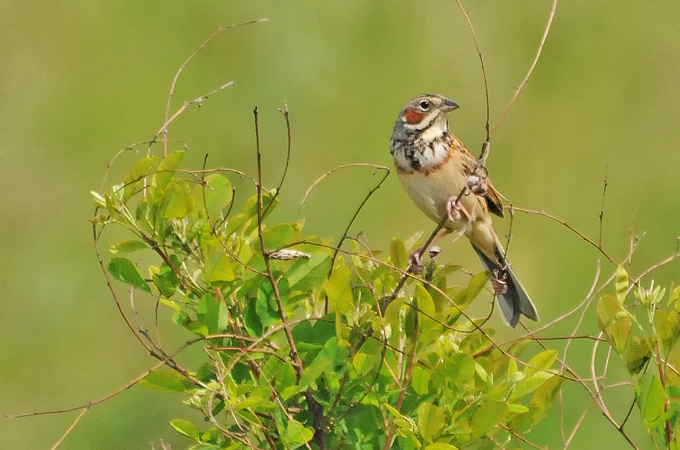
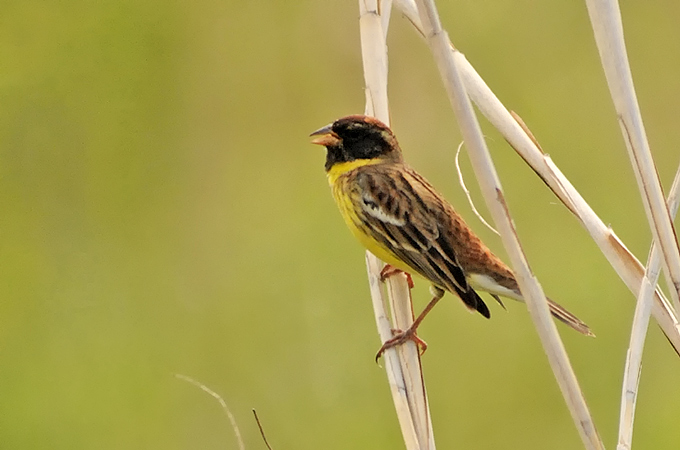
Eocheong Island, Jeju Island, May 14
World Migratory Birds Day and Birdathon Report
Just one day out of a month spent this spring on Eocheong Island, comparing counts of birds made between April 14th and May 16th, 2003 and 2011. While May 13th this year was very species-rich (much more so than back in 2003), the weather on the 14th looked much less promising – cloudless, clear, with a moderate to strong north-northwesterly wind. Hardly the weather you would choose to see a lot of species on an offshore island. First bird of the day too was a little less than inspiring – a shrieking Brown-eared Bulbul before sunrise – happily followed soon after by a much more melodic Korean Bush Warbler singing by the minbak. Out just before sunrise and straight to the quarry in the southwest, a few steps behind the first of the morning’s dog-walkers. There, the species logged increased rapidly – with calling Yellow-browed and Dusky Warblers, a small flock of Little Bunting feeding on the road side and the first of several Chestnut Bunting flocks overhead, followed by another dozen or so regular migrants here (including e.g. Eyebrowed Thrush and Brown Shrike) that are better-known as rare vagrants to the Western Palearctic and North America: evidence of their amazing ability to cross mountains and oceans. Within eight minutes Richard’s Pipit became species 20 for the day and seven minutes later, Greater Short-toed Lark became species 30. In a vivid patch of yellow flowers, the first of the day’s highlights – a Cardinal-red male Common Rosefinch, looking swollen on grass seeds, outshining two accompanying females.
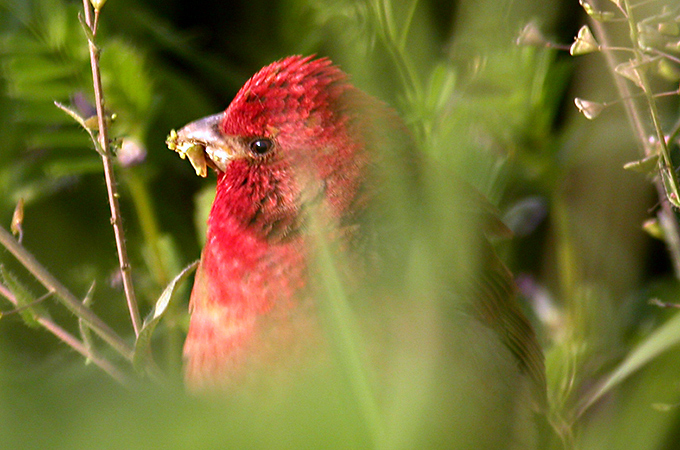
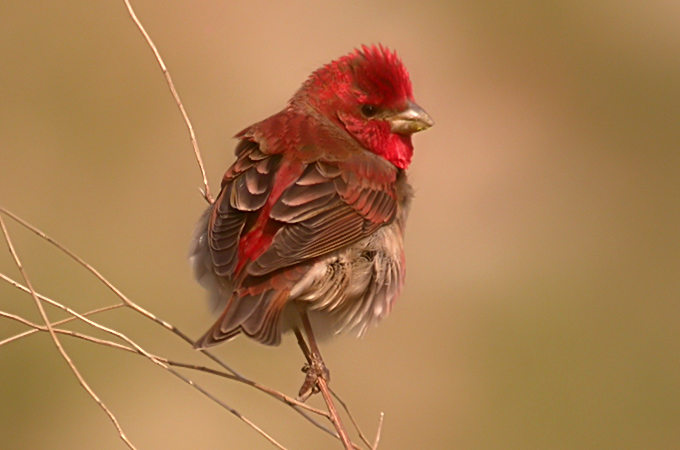
This was followed soon after by singing Lanceolated Warbler (personal first of the spring) and then another blaze of colour for species 40 – a male Siberian Rubythroat, perched near-vertically on the side of a sapling pine. In the next twenty minutes or so, more of the mix of the brown and cryptic (with two Asian Brown Flycatcher and three minor Pallas’s Grasshopper Warbler) and the super-colourful and striking (including four Siberian Blue Robin, eight Black-naped Oriole and a male Siberian Thrush – species number 50).
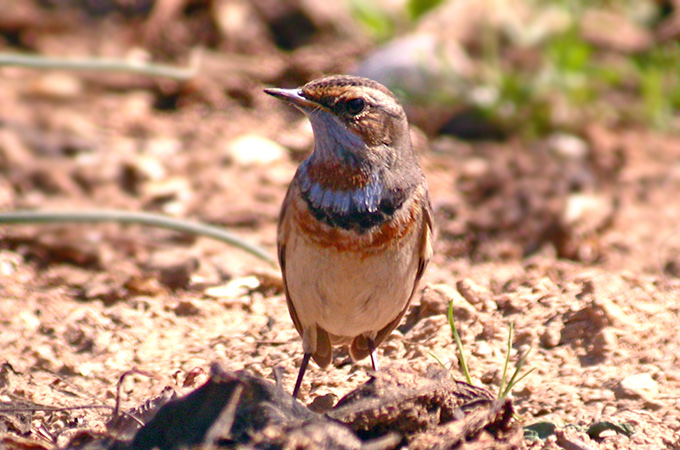
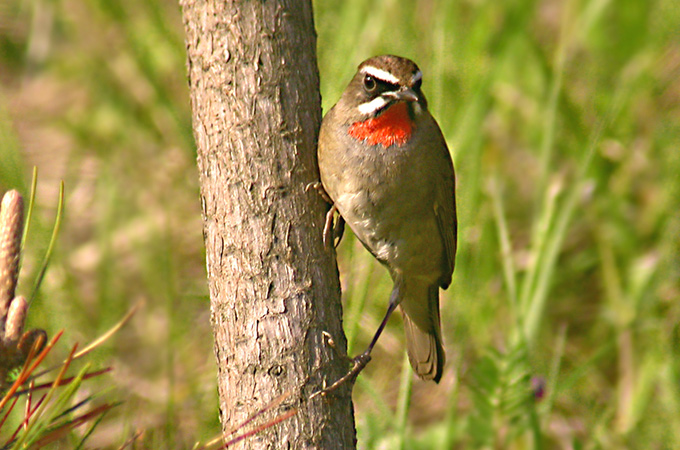
An hour of “viz-migging” (watching migrants coming in off the sea) helped add Pechora Pipit, Oriental Dollarbird and a tardy Japanese Waxwing to the day list, while species 65 was a Yellow-breasted Bunting (already globally Vulnerable, and still declining rapidly here in the ROK at least). A long, late breakfast in the Yangji Siktang (where else?), was followed by a few more new species for the day in the village, including the day’s second Black-capped Kingfisher (also apparently in decline here), and the day’s first Tiger Shrike and Japanese Grosbeak. While the weather remained bright and sunny, it was clear that an increasingly large fair-weather arrival was now taking place, with small parties of Chinese Grosbeak and larger flocks of Chestnut Bunting and Chestnut-flanked White-eye passing overhead. The personal first Indian Cuckoo of the spring was species 76, followed the same minute by several Yellow-browed Bunting and a Black-browed Reed Warbler. The long-staying Russet Sparrow was a beautiful re-find by the school, while the first Eurasian Hobby of the spring over “central-valley” was species 80. Patches of habitat in “central valley”, much-degraded during the past decade through construction, extra wires and buildings and garbage, was now “heaving” with birds – including swelling flocks of Chestnut and Little Buntings, a smart male Bluethroat and, arguably, an even smarter (though far less showy) male von Schrenck’s Bittern, while the newly-gouged our reservoir also held a flock of 13 new-in and hunched-up Green Sandpiper.
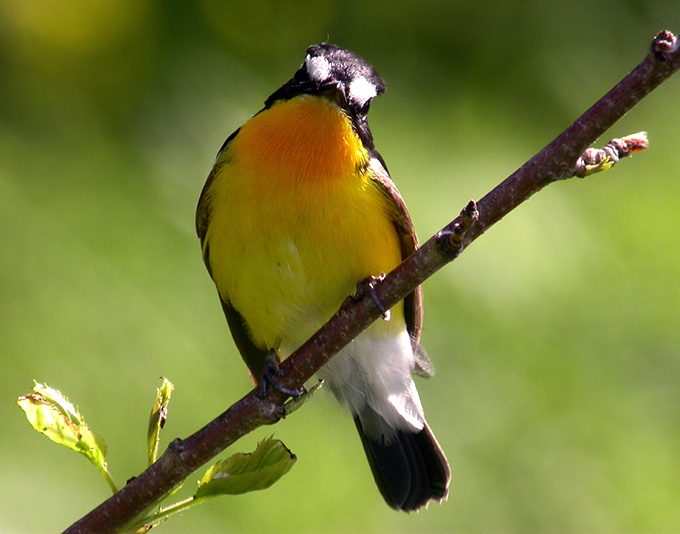
The boardwalk (yet another change to the landscape of Eocheong Island since 2003), already greatly increases disturbance to shorebirds and egrets along the beach, and will soon be extended the whole length of the eastern flank of the bay. However, it also allows easier viewing of landbirds – especially during strong northerly winds. There was no sign of the Tickell’s Leaf Warbler seen there on the 13th, but still several Yellow-rumped Flycatcher, and in addition, a Hume’s Leaf Warbler, a Light-vented Bulbul and a Black Drongo all suggesting displacement of migrants from the other side of the Yellow Sea, and all helping push the day total into the low 90s… From there, back north – “up slope” and to the Lighthouse – and a few more interesting species. While numbers of hirundines are much-reduced compared to less than a decade ago, one small flock feeding of 30 birds along the hill ridge contained both Asian and Northern / Common House Martins and also attracted a passing White-throated Needletail, bringing the species total for the day up to 98 with more than an hour of daylight still remaining. At the lighthouse, rather fewer birds – but after a 20 minute wait, yesterday’s male Watercock reappeared, testing out a small patch of wet mud and grass: species 100! Back towards the village in the falling light and above the all-pervasive noise of the power station, a chorus of Tree-frogs; the Green Sandpiper flock emerged from what appeared to be an exhausted slumber into a frenzy of departure; one or two Pin-tailed Snipe called overhead; a Grey Nightjar chok-chok-chok-ed; flocks of thrushes and buntings lifted into the night sky; and the last new species for the day (number 104) at five minutes past eight – a calling Oriental Scops Owl, throat pulsating, silhouetted hard against the night sky.
After such a wonderful day, it is easy to appreciate how migrant birds like these have inspired people across continents and through the millennia. And yet, how many people even noticed these birds over the noise of loudspeaker muzak, boat engines and other artificial noise and lights? More importantly, how many of us, here and around the world, are really willing to modify our lifestyles and make the right kinds of choices so that such species and migrations can survive long into the future?
Mara-do and southwest coast, Jeju Island, May 14
A great day of birding on the Southwest coast of Jeju, on a sunny and warm day, with close to 70 species seen.
On Mara-do, a dozen Little Bunting, as well as a male Yellow-breasted, and Chestnut Bunting were hopping around at the top of a grassy cliff. A small cluster of pine trees at the centre of the island was teeming with Asian Brown Flycatchers, Yellow-browed, and Eastern Crowned Warblers. Single examples of Dusky Warbler, Common Cuckoo, Oriental Reed Warbler, Black-naped Oriole, Richard’s Pipit, and Long-tailed Shrike were seen, as well as Two Brown Shrikes, and clouds of Pacific Swifts.
On the ferry ride back, two unmistakable Japanese Murrelets bobbed past the ferry at a distance of about 20 feet. Of course, my camera was safely (and hopelessly) stuffed inside my windbreaker so as to protect it from spray from the bow, and I couldn’t get it out in time to snap a picture.
I happily lost my way in the farm roads of Mureung, and ended up driving past a Black Drongo that had dropped down from a power line to feed next to the road. On a small wooded hill on the southwest coast I spotted a Mugimaki Flycatcher, several Eye-browed Thrush, and two impressive Broad-billed Rollers. At least two dozen Black-winged Stilts and several Mongolian Plovers were seen at various points along the west coast, and I saw a Red-billed Starling perched on a balcony on a rooftop on the way back.
Back in Seogwipo, a pair of Striated Herons seemed to be engaging in a courtship chase in a riverside park, while in another nearby park, the lone resident Striated was intently hunting on a small stream, where I photographed it earlier in the week.

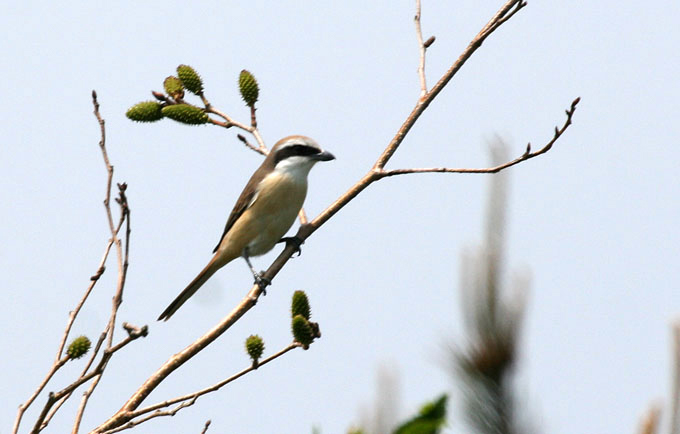
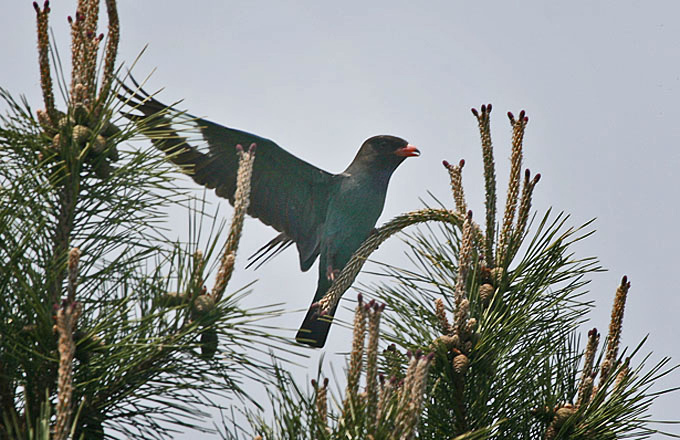
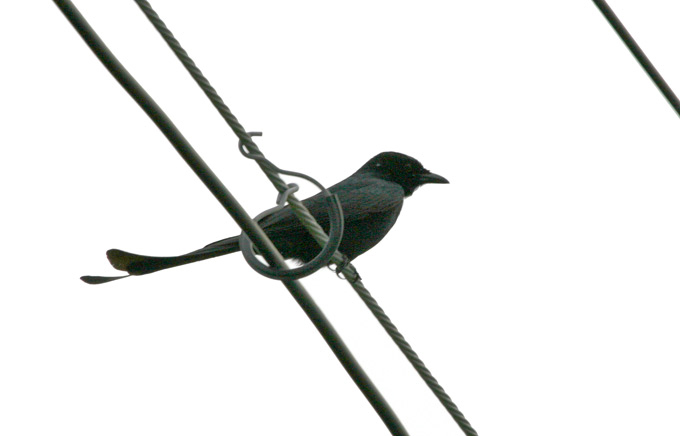
Mungap Island, May 14
Cool and sunny: 56 species counted before boarding the boat. A break from last night’s strong winds spurred a lot of activity, with some 200+ unidentified small passerines flying over the ridge from 11am onward. Anxious bunches of Chestnut-flanked White-eye (149) moved through. New on the scene was a Pin-tailed Snipe, 2 Dollarbird, 2 Raddes Warbler, 3 Common Cuckoo, 1 Red-billed Starling, a wheeling Japanese Sparrowhawk, 1 Blue Rock Thrush, and a Eurasian Sparrowhawk. While watching a skulking Lanceolated Warbler attempting to creep away through the grassland, out stepped a Ruddy-breasted Crake.
Unusually, 4 cristatus Brown Shrike were seen side-by-side on a wire, engaged in some sort of dispute: there are also lucionensis about. One of the resident Peregrines was hunting very actively today, first whooshing over my head with the screech of a jet fighter, then later hurling itself at the two Spot-billed Ducks, which escaped by jumping into the sea. These rapacious falcons apparently own not only Mungap but at least one of the neighbouring islands, which they commute to and from.
So then I left, with a 48-hour total of 80 species.
Mungap Island, May 13
Still very cool, bright and clear, with an easterly wind. Of 56 species, several new sights. Most welcome were 2 very sleek Japanese Grosbeak, sat near the summit of Kitde-bong. Also 3 Taiga Flycatcher, 2 macronyx Eastern Yellow Wagtail, 2 Dusky Warbler, 2 Peregrine, 3 Eye-browed Thrush, 6 Siberian Stonechat, a Common Sandpiper, 1 Chinese Grosbeak, a Richards Pipit, 1 Siberian Blue Robin, 4 Asian Stubtail, and a pretty Eastern Oystercatcher turning over the shells on the beach.
Once again most notable (and noisy), the urgent passage of 497 Chestnut-flanked White-eye, massing before moving off the northernmost point. Also 12 Ashy Minivet flying over and through.
Mungap Island, May 12
SW breeze. Overcast, becoming clear and sunny by mid afternoon, with mist later: cold in the evening.
An afternoon on this blissfully quiet and mostly untouched island produced 57 species, with a fair bit of visible movement and falls of migrants. The most visible migration comprised 142 Chestnut-flanked White-eye moving through in restless waves of shrill flocks, also the passage of 3 Barn and 9 Red-rumped Swallow, 10 White-throated Needletail, and an Oriental Honey Buzzard over.
Noteworthy were 2 Common Rosefinch, a Chinese Pond Heron, a Forest Wagtail, 1 Yellow-breasted Bunting, a Grey Nightjar, 2 Ashy Minivet and 1 or 2 presumed Hume’s Warbler among the 60+ tired-looking Yellow-browed Warbler. By mid afternoon, obvious new arrivals flopping about on the ground included a Dark-sided and 17 Asian Brown Flycatcher, 18 Chestnut and 1 Chestnut-eared Bunting.
In relatively good numbers were Mugimaki (8) Black-faced Bunting (46), Yellow-rumped Flycatcher (11) Pale-legged Leaf Warbler (18) and Eastern Crowned Warbler (18).
Resident or in breeding territory on the island were 2 Hobby, an Oriental Scops Owl, 2 Long-tailed Tit, 2 Yellow-throated Bunting, 3 Pale Thrush, a Great Spotted Woodpecker, 1 Grey-backed Thrush, a trilling Rufous-tailed Robin, 4 Brown-eared Bulbul, 2 Jay, 6 Eastern Great Tit, 1 Varied Tit, a Bull-headed Shrike, 2 Common Kingfisher and 4 Black-naped Oriole.
Otherwise present, a lone Black-billed Magpie, 14 Oriental Turtle Dove, 4 Cattle Egret, 6 Grey Wagtail, 1 Large-billed Crow, 6 Olive-backed Pipit, a Striated Heron, 1 Indian and 1 Lesser Cuckoo, 2 Mongolian among the usual Black-tailed Gulls, 3 Grey-streaked Flycatcher, 7 Tristram’s and 2 Yellow-browed Bunting, 2 Blue-and-White Flycatcher, 8 Temminck’s Cormorant, 5 Brown Shrike, 3 Little Bunting, 1 Little Egret and 3 Spot-billed Duck.
- Although Mungap remains one of the most pleasant of the Korean Isles, construction has unfortunately begun to increase. There is now a monstrous new ticket office and 2 new houses are being built: the central damp marshy area is gradually being filled in. The pond has been gouged out and enlarged, and is now ringed by a boardwalk.It is still a concrete shell, but hopefully the natural vegetation will recover in time.
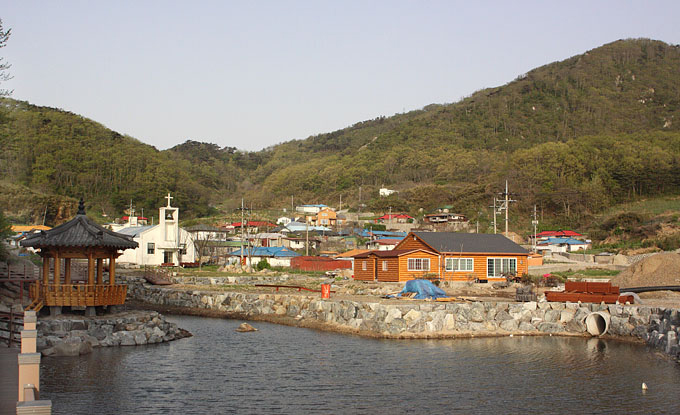
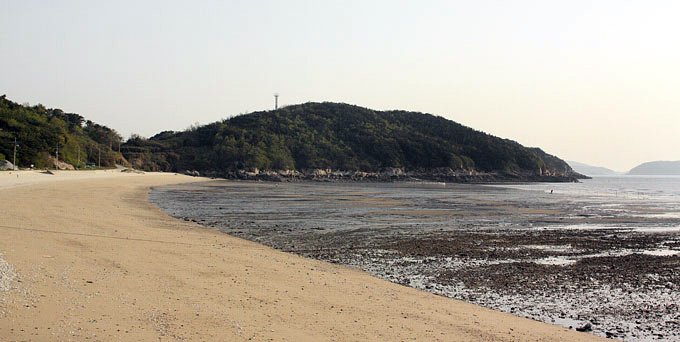
Eocheong Island, May 8-10
Reading even the most extraordinary news from Eocheong-do during spring migration doesn’t compare to an actual visit. It seemed like around every corner was something new to discover and observe. Unfortunately, my understanding is that even though my enthusiasm is at a high, some species did seem to be at a noticeable low. Nonetheless, we observed a great number of species.
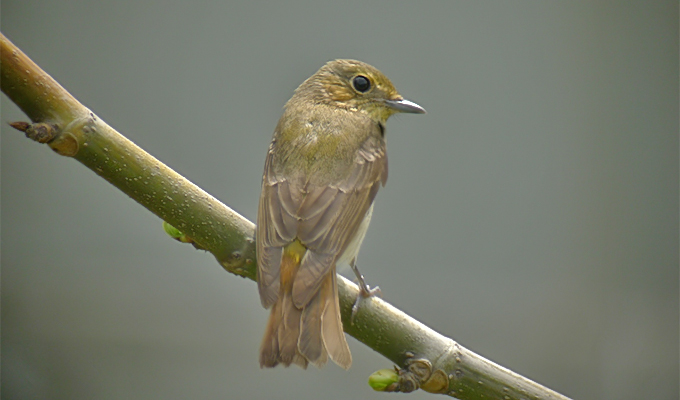
Chinese Pond Herons, Siberian Blue Robins, Red-flanked Bluetails, Ashy Minivets from the tree tops, Black-naped Orioles in flight, Chinese Grosbeaks on telegraph wires, a Japanese Grosbeak observed from the tip top of a tall tree, Russet Sparrows outside the school yard, Tristram’s Buntings, Little Buntings, Chestnut Buntings, Yellow-Breasted Buntings, Yellow-browed Buntings, and a Yellow Bunting in and out of the gardens.
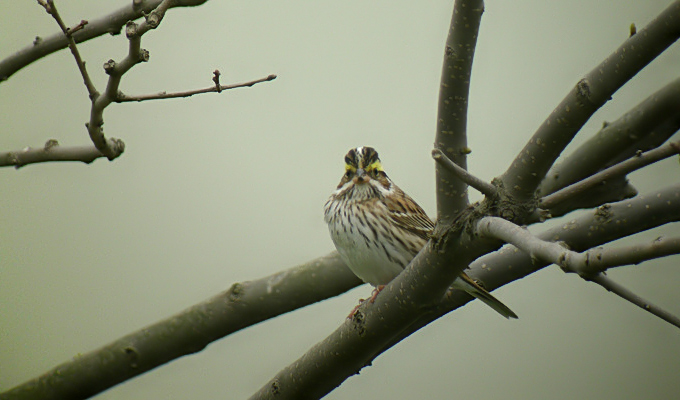
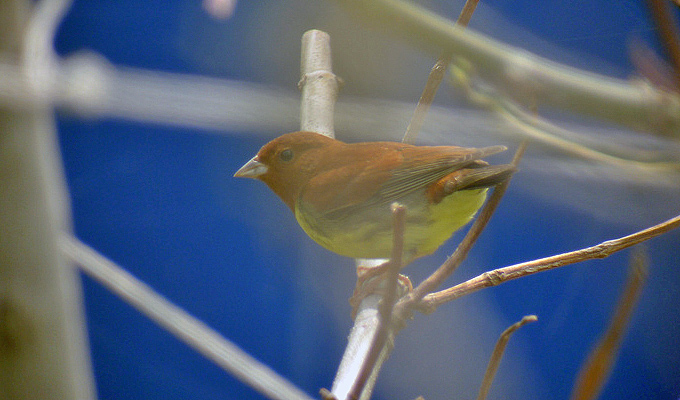
There were several Pale-legged Leaf Warblers as well as Yellow-browed Warblers singing here and there, allowing me to get to know their songs and calls very well. Eastern-crowned Warblers were about, but not in very high numbers. A Korean Warbler calling and then coming in full view in a bush alongside the beach.
A few Dusky Warblers were about, and at one point, a Radde’s Warbler came down close to a Dusky, allowing for an observance of contrast between the two; as did with a Blythe’s and Richard’s Pipit; and as did with a very delicate and lovely looking Black-browed Reed Warbler in the same thicket as an Oriental Reed Warbler. A Red-throated Pipit was also observed. A striking Siberian Rubythroat streamed passed me, after it and another were seen possibly battling over territory.
Quietly watching a grassy rocky cliff-side on one of the mornings, a well-hidden Pintail Snipe suddenly jetted out right in front of us and then off into the distance. A drab Common Rosefinch in the garden, beautiful Rufous-tailed Robins were heard singing and a few seen as well, as were some vibrant Yellow-rumped Flycatchers here and there, and a very interesting Narcissus Flycatcher, and for us an elusive Ferruginous Flycatcher, originally spotted by Mr. Choi Seong Hoon. Some Asian Brown Flycatchers were about and a Grey-streaked Flycatcher was observed and a few heard calling. A few gorgeous Taiga flycatchers were also rattling away.
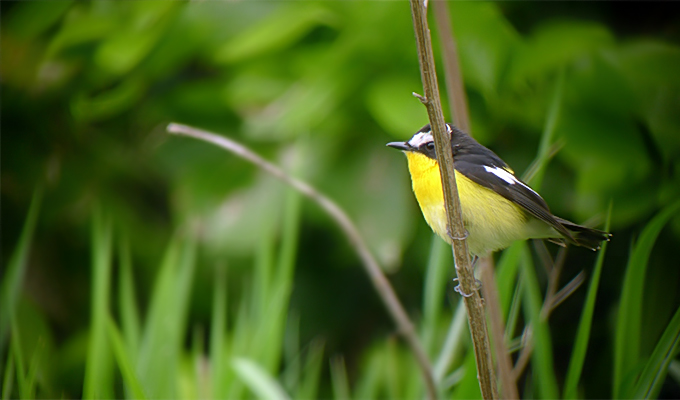
House swifts, Red-rumped Swallows, Barn Swallows were swooping up and around the overcast damp sky. At least two Brown Shrikes were observed, one being of lucionensis. A couple of Dollarbirds came at one point during one of the evenings and could be viewed from afar. A Grey Nightjar also swung around the side of the harbor in the even later evening sky. Shorebirds seen were several Common Sandpipers, a tired Mongolian Plover, and a very exhausted and also very interesting Pacific Golden Plover. A gorgeous Forest Wagtail and some gorgeous Eastern Yellow Wagtails, including one of taivana.
Oriental Cuckoos could be heard. A Grey-faced Buzzard, Chinese Sparrowhawks, Japanese Sparrowhawks, and a Peregrine Falcon could be observed. Chinese Blackbirds, the call of a Siberian Thrush, Grey-backed Thrushes, an Eyebrowed Thrush, and on a walk quiet during a very misty windy afternoon from the lighthouse, I came eye to eye with one of the most amazing birds I’ve ever seen, a White’s Thrush. Wow!
It seems as though the list could continue, and at least 85 species were observed on one of the days. Was a remarkable weekend, and at one point when a storm came in, and the ferry couldn’t come, at the risk of missing work, I was allowed one more evening and morning of greatness. Ah, migration just leaves me in awe.
Taejongdae, Busan, May 7
Last night’s drizzle and mist failed to produce much in the way of migrants at Taejongdae today, however the visit was made more than worthwhile by a surprise encounter with Taejongdae’s best bird of the spring – Japanese Night Heron. This bird frequented the upper (concreted) part of the gully, and was first encountered standing in full view on the gully bank, before it flushed and disappeared into the forest. On my return visit to the gully a couple of hours later, I saved it from certain death at the claws of a stalking cat when I flushed it again in the top part of the gully. It flew up and perched in a tree, giving excellent views before once again flying into the forest. Other than this first-class rarity, there was little of note in the area, with much reduced numbers of Pale Thrush and only single Asian Brown Flycatcher, Eastern Crowned Warbler and Tristram’s Bunting of note.
Eocheong Island, April 29 - May 4
With the warmer weather continuing and apparently a ridge of high pressure feeding south-westerlies out from southern China, a few more birds in, especially in the afternoon, and 77 species were logged for the day. “Minor highlights” included a Japanese Grosbeak with a small group of Chinese Grosbeak still, a Hume’s Leaf Warbler, two Russet Sparrowtogether, four Eurasian Wryneck, , two Chinese Blackbird still, and nine species of bunting, all in breeding plumage, including four male Chestnuts, a male Yellow-breasted, a male Pallas’s Reed, several Yellow-browed and Tristram’s Buntings, and, best for the day two Yellow Bunting (the Cinereous Bunting of the East?). Lingerers included the three Marsh Sandpiper still, while new for the spring were two Crested Honey Buzzard and a Pechora Pipit.
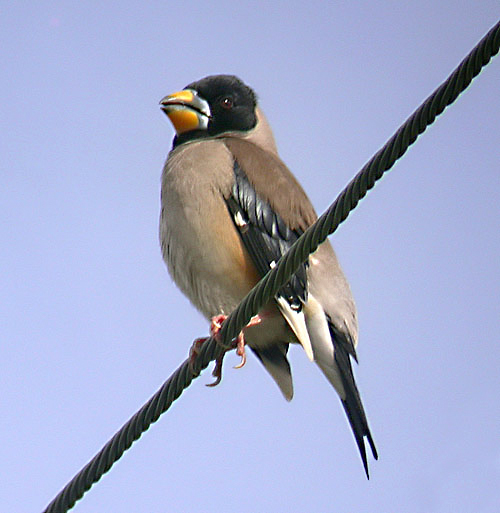
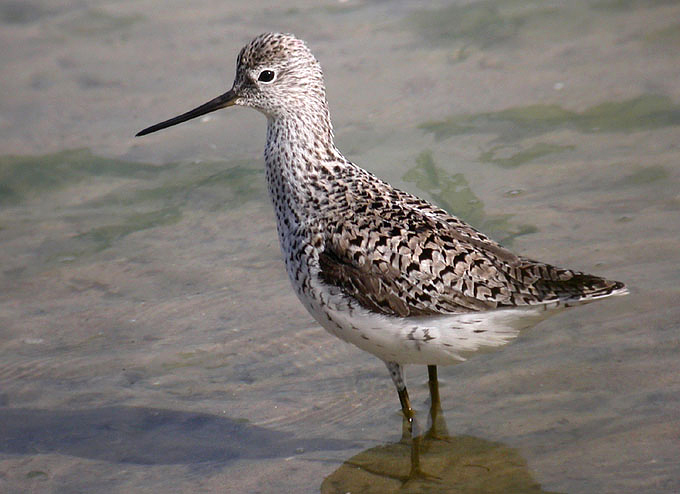
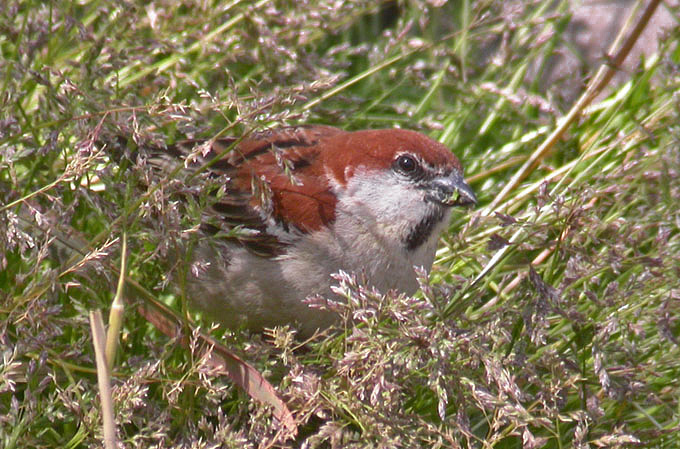
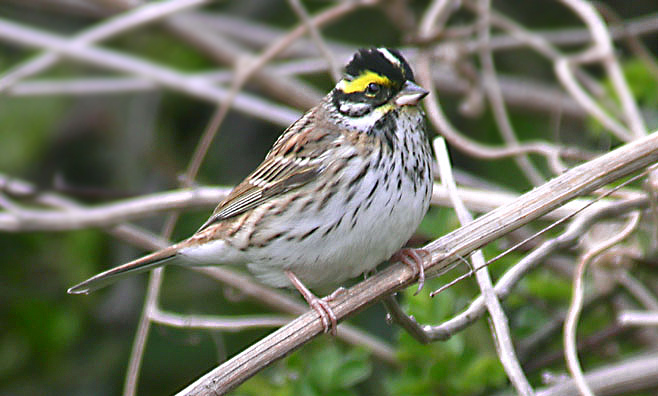
Eocheong Island, April 29 - May 3
Milder, though rather poor still with only 69 species logged. Best were either one or two Russet Sparrow (one in the quarry, and one in the back-gardens, both before 7AM), a Japanese Grosbeak, a female Grey Thrush, two Red-billed Starling and a male Yellow-rumped Flycatcher (only the second here so far this spring).
Eocheong Island, April 29 - May 2
Continuing cooler and quieter than expected, with personal firsts for the spring of Black-naped Oriole, Brown Shrike and Radde’s Warbler, though one visiting overseas birder did rather better with two White-breasted Waterhen and a Chestnut-cheeked Starling too…
Junam Reservoir, May 1
A warm, sunny afternoon, and as expected a quiet visit, however there were still a few birds which were perhaps worthy of note. Foremost among these was the adult Hooded Crane on rice fields NE of the main reservoir; probably a sick or injured bird, it cut a forlorn and lonely figure as it walked slowly about under the warm sun. Also of note, 5 Little Terns over the main reservoir, and a pair of Eurasian Hoopoes carrying food (suggesting probable breeding) near the stone bridge.
Taejongdae, Busan, May 1
Overnight rain cleared to a warm, sunny day, and once again a decent selection of migrants was in the area. Today’s highlights comprised a male Yellow-browed Bunting near the monument at the park entrance, 2 Tristram’s Buntings, 3 Black-faced Buntings (including a male personata again), 2 Rustic Buntings, a male Narcissus Flycatcher, 4 Grey Thrush, and still a handful of phylloscopus warblers above the lighthouse including Eastern Crowned, Pale-legged Leaf, Yellow-browed, plus Arctic Warbler heard.
Eocheong Island, April 29 - May 1
The big storm of the 30th came and went, with very strong winds and several hours of thundery rain. Birds of most note from this system were a Black-winged Stilt before the storm hit; during the storm a Common Redshank and the spring’s first Sand Martin (yet another species apparently undergoing steep declines here); and on May 1st, the island’s second Pied Wheatear of the spring (this one a female), present for only 10 minutes or so the morning after…Other species of note on May 1st were a breeding-plumaged Chinese Egret, two Eurasian Wryneck and the extremely confiding White’s Thrush again…this time feeding for a couple of minutes before falling asleep on a sun-kissed bank.
